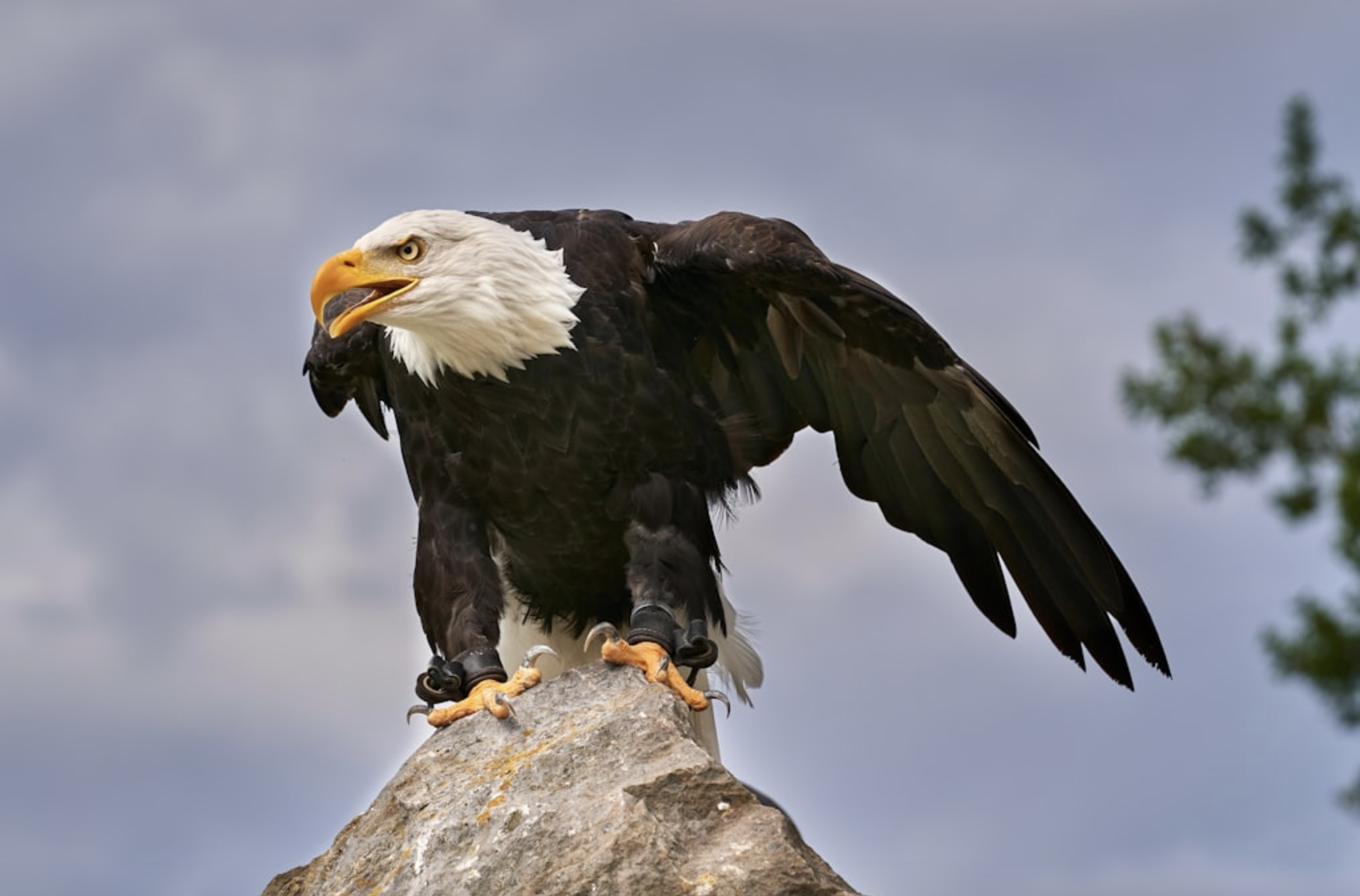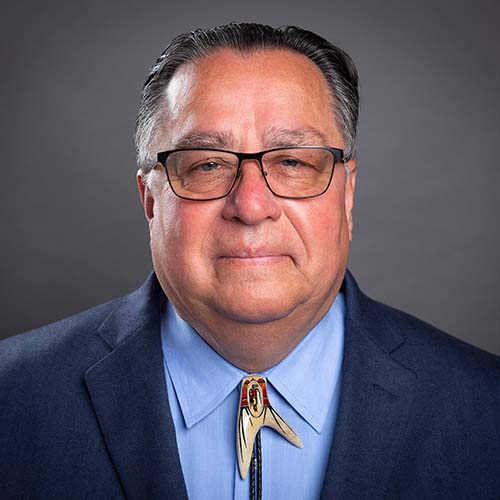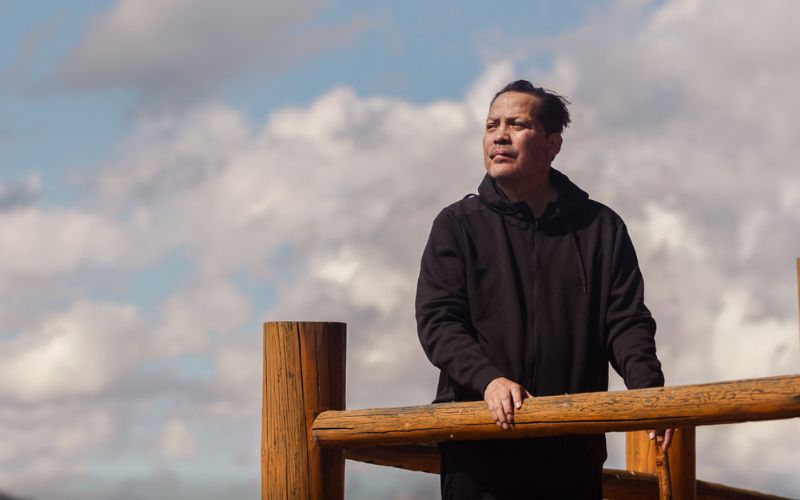
- Details
- By Professor Victoria Sutton
Guest Opinion. In a story that is repeated every spring, another high school student (Native American) was forced to remove their mortar board at graduation because they had used an eagle feather with the tassel in addition to other beading additions. This time, May 2024, it occurred in a place that should have known better (or responded better) — Farmington, New Mexico just outside the Navajo Nation.
As the national anthem played during the 2024 Farmington High School graduation ceremony in New Mexico, two staff members approached the Hunkpapa Lakota graduate and told her to remove her mortarboard. White Bull’s mortarboard was decorated around the edges with beadwork and featured an aópazan, or eagle plume, as a tassel.
After the incident the American Indian College Fun expressed their support of Native students wearing traditional items to recognize their graduation. Here is an ad from AICF:
Possession of Eagle Feathers
The possession of eagle feathers is prohibited by the Migratory Bird Treaty Act and the Bald and Golden Eagle Protection Act.
Just the possession of eagle feathers is allowed in the U.S. only by Native American members of federally recognized tribes, for those with an educational purpose and museums.³ Eagle feathers owned before eagles were first protected by Federal law (1940 for bald eagles, and 1962 for golden eagles) or those passed down within a family or received as gifts. (However a Native Americans cannot legally gift a non-Native American with an eagle feather).
Possessing an eagle feather could mean a fine of $5,000 and/or one year in jail.
But possession of eagle feathers is not as easy as it may sound for Native Americans. First, Native Americans cannot just collect a bald or golden eagle in the wild — they have to obtain them from the National Eagle Depository managed by the U.S. Department of Interior, Fish and Wildlife Agency. The applicant must be a Native American from a federally recognized tribe and at least 18 years old. Native Americans report they have been waiting years for their requested eagle feather(s). This is a religious exception to the statute.
The Yankton Sioux Tribe successfully challenged the federal statues to enforce their treaty right to take eagles, in United States v. Dion (1986). But this is a unique case.
The National Eagle Depository can also supply eagle feathers for graduations. A school representative may begin making requests — one at a time— starting at the beginning of the school year. This federal involvement in graduations indicates there is a recognition of the significance of this practice with eagle feathers.
These long wait times for eagle feathers has created a black market for them. In Montana, a man was caught on a “killing spree” on the Flathead Reservation, who had killed over 3,000 birds. He was selling the feathers to Native Americans and others.⁷ Similarly, a man in South Dakota in 2023 was sentenced to three years in prison for killing eagles.
The government decides who can have their Native American religion
The term federally recognized tribe, refers to those tribes on a list found in the Code of Federal Regulations (CFR) that has been established by the U.S. Supreme Court to be a political relationship. Without this “political relationship” a Native American cannot practice their religion or engage in this religious practice of using eagle feathers, whether it is to wear in graduation or wave over a burning shell of sage, to send the smoke with a prayer to the creator. So the “religious exemption” is actually a “political relationship” exemption masked with a religious exemption rationale.
This has led to arrests of Native Americans who are not members of federal recognized tribes, while even participated in powwows, side by side with a sister tribe that may be federally recognized. In 2001, the Federal Court of Appeals for the Tenth Circuit, upheld the conviction of a Native American, not a member of a federally recognized tribe, holding that “[A]llowing tribal members to possess eagle feathers for purposes of worship according to the Native American traditions is rationally related to the government's obligation to preserve tribes' heritage and culture.” But this is based on the trust relationship between the federal government and Tribes, not a religious exemption. Thus they also avoided violating the Establishment Clause of the First Amendment. Yet, the Department of Interior still maintains the permit is for a “religious exemption.”
Looking forward
The government should not be in the business of deciding who can have what religion in America. Those Native Americans not affiliated with those tribes in a “political relationship” with the federal government, should not be discriminated against for their religion, much less arrested! They should be restricted to the same limitations as federal recognized tribal members, which are no small burden — years of waiting for permitted possession of eagle fathers from the National Eagle Depository.
If a student could request permission to wear an eagle feather at the beginning of the year in which they graduate, should that not be sufficient? Uniformity has value, but is an eagle feather and other similar sized items really going to destroy the sea of black robes? Rules are important and an important lesson, so why not demonstrate how rules can be followed? Almost all regulations make room for exceptions and so should graduation ceremonies, through appropriate and timely requests.
So the next time you hear a school administrator forcefully demanding an eagle feather to be taken from the clothing of a Native American graduating student, consider the years that eagle feather may have been in that family, or the years they waited for it from the federal government’s approved source.
To read more articles by Professor Sutton go to: https://profvictoria.substack.
Professor Victoria Sutton (Lumbee) is a law professor on the faculty of Texas Tech University. In 2005, Sutton became a founding member of the National Congress of American Indians, Policy Advisory Board to the NCAI Policy Center, positioning the Native American community to act and lead on policy issues affecting Indigenous communities in the United States.
Help us tell the stories that could save Native languages and food traditions
At a critical moment for Indian Country, Native News Online is embarking on our most ambitious reporting project yet: "Cultivating Culture," a three-year investigation into two forces shaping Native community survival—food sovereignty and language revitalization.
The devastating impact of COVID-19 accelerated the loss of Native elders and with them, irreplaceable cultural knowledge. Yet across tribal communities, innovative leaders are fighting back, reclaiming traditional food systems and breathing new life into Native languages. These aren't just cultural preservation efforts—they're powerful pathways to community health, healing, and resilience.
Our dedicated reporting team will spend three years documenting these stories through on-the-ground reporting in 18 tribal communities, producing over 200 in-depth stories, 18 podcast episodes, and multimedia content that amplifies Indigenous voices. We'll show policymakers, funders, and allies how cultural restoration directly impacts physical and mental wellness while celebrating successful models of sovereignty and self-determination.
This isn't corporate media parachuting into Indian Country for a quick story. This is sustained, relationship-based journalism by Native reporters who understand these communities. It's "Warrior Journalism"—fearless reporting that serves the 5.5 million readers who depend on us for news that mainstream media often ignores.
We need your help right now. While we've secured partial funding, we're still $450,000 short of our three-year budget. Our immediate goal is $25,000 this month to keep this critical work moving forward—funding reporter salaries, travel to remote communities, photography, and the deep reporting these stories deserve.
Every dollar directly supports Indigenous journalists telling Indigenous stories. Whether it's $5 or $50, your contribution ensures these vital narratives of resilience, innovation, and hope don't disappear into silence.
 The stakes couldn't be higher. Native languages are being lost at an alarming rate. Food insecurity plagues many tribal communities. But solutions are emerging, and these stories need to be told.
The stakes couldn't be higher. Native languages are being lost at an alarming rate. Food insecurity plagues many tribal communities. But solutions are emerging, and these stories need to be told.
Support independent Native journalism. Fund the stories that matter.
Levi Rickert (Potawatomi), Editor & Publisher















